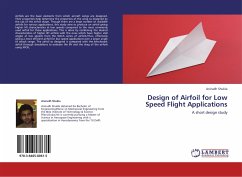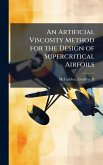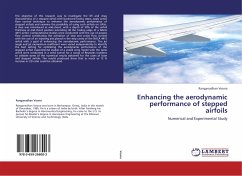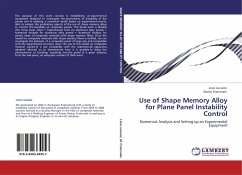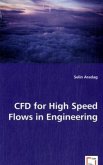An innovative tool for shape optimization of low
speed airfoils was developed by the author at KTH,
in 1997-2000.
The tool is written in Matlab, and is constructed by
coupling the Matlab Optimization Toolbox with a
parametrised numerical aerodynamic solver.
The airfoil shape is expressed analytically as a
function of some design parameters. The NACA 4
digits library is used with design parameters that
control the camber and the thickness of the airfoil.
The solver has to provide fast and robust
computation of the lift, pitching moment and drag of
an airfoil placed in a low-speed viscous flow. A one-
way coupled inviscid - boundary layer model is used.
The derivatives of these results are also computed
by the solver. This was done by automatic
differentiation, a technique for augmenting computer
programs with the computation of derivatives based
on the chain rule of differential calculus.
Finally as an application, sample optimization
problems are solved and the resulting optimal
airfoils are analysed.
speed airfoils was developed by the author at KTH,
in 1997-2000.
The tool is written in Matlab, and is constructed by
coupling the Matlab Optimization Toolbox with a
parametrised numerical aerodynamic solver.
The airfoil shape is expressed analytically as a
function of some design parameters. The NACA 4
digits library is used with design parameters that
control the camber and the thickness of the airfoil.
The solver has to provide fast and robust
computation of the lift, pitching moment and drag of
an airfoil placed in a low-speed viscous flow. A one-
way coupled inviscid - boundary layer model is used.
The derivatives of these results are also computed
by the solver. This was done by automatic
differentiation, a technique for augmenting computer
programs with the computation of derivatives based
on the chain rule of differential calculus.
Finally as an application, sample optimization
problems are solved and the resulting optimal
airfoils are analysed.


